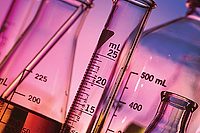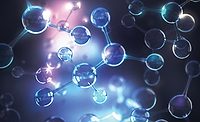
According to a recent survey of product design engineers and general managers of 245 U.S. firms that manufacture heating equipment, the most critical physical properties of adhesives are high temperature resistance, thermal conductivity, and electrical resistance. The survey was conducted in January by Industrial Research Services, a market research firm located in Tarentum, PA, and sponsored by Sauereisen Inc., a third-generation manufacturer of specialty cements.
"As a leader in this field, we make it a point to keep our finger on the pulse of the industry by talking with our customers," said C. Karl Sauereisen, vice president. "The data shown in this survey reaffirms our commitment to providing inorganic adhesives that withstand the highest level of temperature and electrical current."
Ninety-four percent of those surveyed ranked physical properties as the most important attribute when selecting an adhesive to be used in high-temperature assembly of instrumentation.
A wide spectrum of criteria is encompassed by the term ‘physical properties,' Sauereisen said. "Generally, physical properties are the ultimate performance characteristics, or strengths, that a material will exhibit.
"For instance, adhesive applications typically prioritize a few critical properties such as bond strength, flexural strength, temperature resistance or electrical insulation. Consequently, design engineers customarily focus on selecting an adhesive that exceeds or most closely matches their main requirements in a given application.
"From our experience in meeting the needs of OEM engineers, we realize that the operating conditions under which our cements function continues to become more extreme. So, to the degree that our cements will withstand greater thermal shock, the usable life of an instrument held together by our cement increases. In other cases, the cement's ability to withstand strong electrical current at a high temperature prevents premature failure. We realize that the quality of our customers' products is dependent on our ability to deliver superior physical properties."
The study also demonstrated that inorganic adhesives, such as those with a silicate, phosphate or calcium aluminate binder system, are deemed superior to other methods, such as mechanical fasteners and epoxies, when subjected to high temperature and electrical current.
Sauereisen said that the study's results confirm that the company is positioned well in targeting assembly applications subject to high temperature and electricity.
Given that another division of the Sauereisen enterprise is devoted to the creation of corrosion-resistant construction materials, the survey has helped to shape R&D priorities. Presently, Sauereisen's list of research initiatives for bonding agents is at a 20-year high. Many of these projects involve customization of base formulas to accommodate very concise dispensing and curing parameters. The common theme among this trend is to maximize productivity for end-users.
Established in 1899, Sauereisen offers worldwide distribution of specialty adhesives and potting compounds to bond ceramic, metals, and glass. The cement-based materials are commonly specified for heating elements, resistors, halogen lamps, thermocouples and igniters.
For more information, contact Sauereisen, 160 Gamma Drive, Pittsburgh, PA 15238; phone (412) 963-0303; fax (412) 963-7620; or visit http://www.sauereisen.com .
SIDEBAR: About Sauereisen
Sauereisen's adhesives and potting compounds are inorganic, ceramic-based materials. These specialty cements are composed of high-purity, inert fillers such as silica, alumina or zircon. The nature of these materials, when formulated in a dense matrix with an appropriate binder, is to exhibit high thermal conductivity and electrical insulation. When dispensed, Sauereisen cements exhibit the consistency of a thick cream until they harden and fully cure.Sauereisen products bond to ceramics, metals and glass, which makes them ideal for many electrical instruments that operate at high temperature. Some end-use components that require technical cements include heating elements, resistors, halogen lamps, igniters and thermocouples. The original Sauereisen adhesive, formulated in 1899, is still in demand today.




